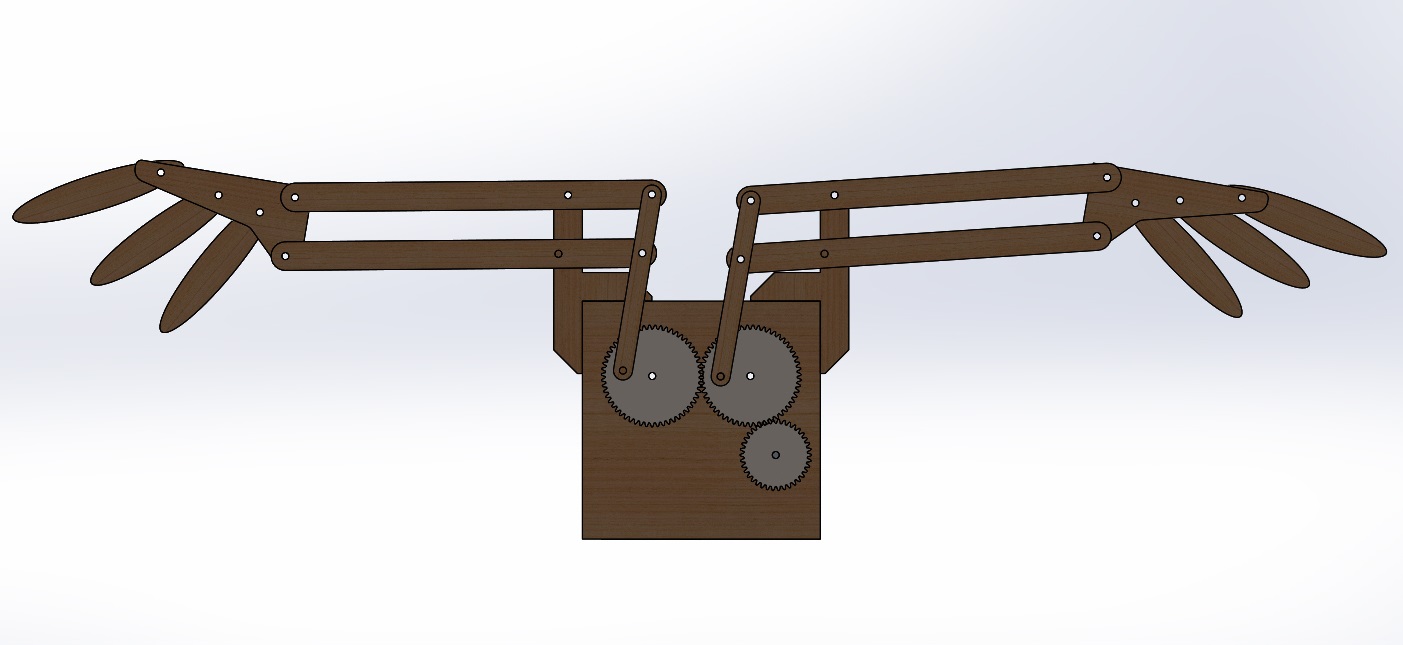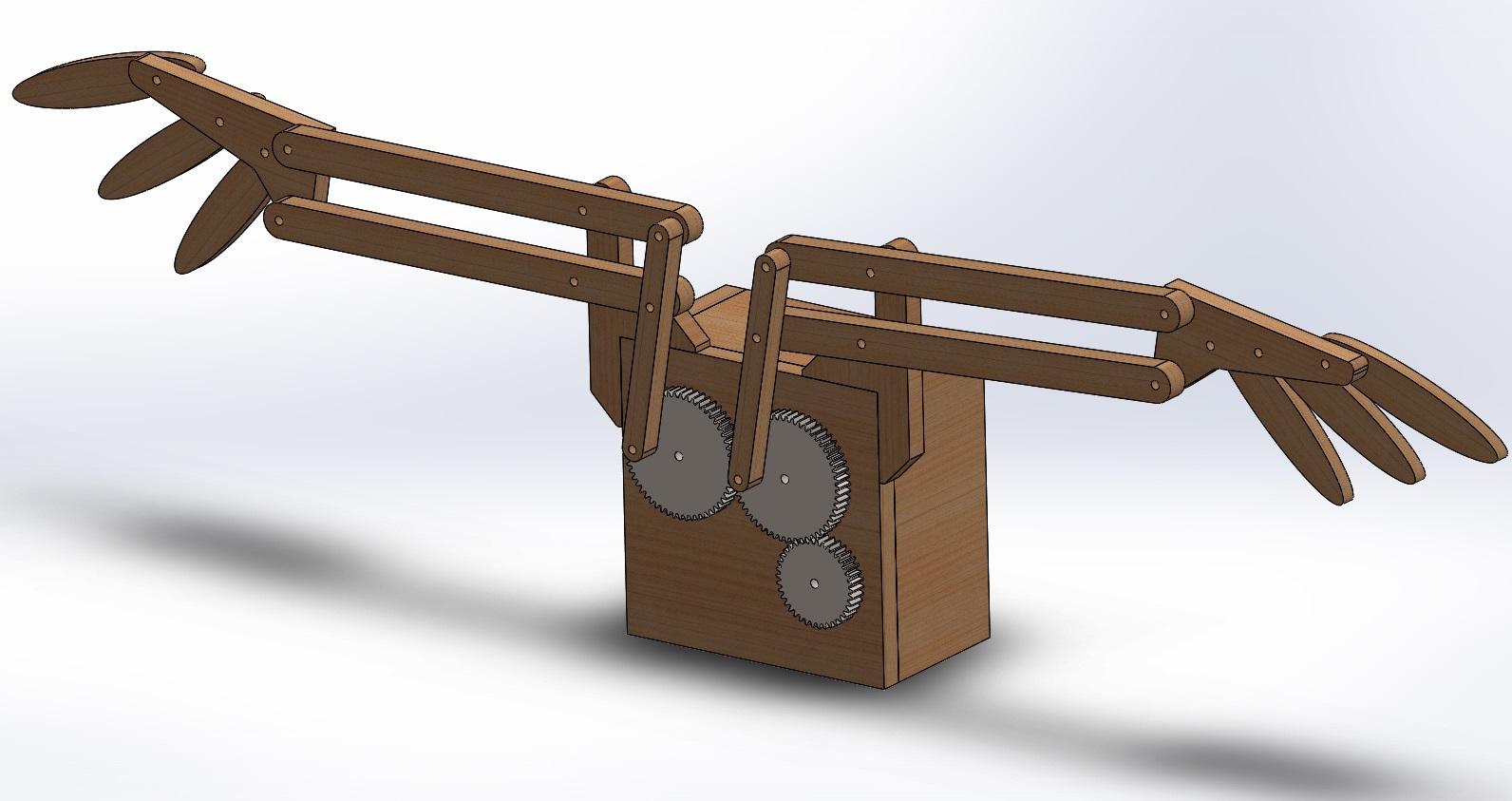Download Project Document/Synopsis
The purpose of the flapping mechanism is to convert the rotary motion of the motor into the reciprocating motion of flapping wings. There are many ways to do this, and we will describe only some of the more common ones here. The mechanism must be lightweight and fairly simple. Yet it must also provide a fairly symmetrical wing motion so the ornithopter flies straight.
The basis for most mechanisms is called a “four-bar linkage”. There is a rotating crank shaft, driven by the motor. As the crank goes around, the connecting rods push the wings up and down.
Unfortunately, when a second wing is added, this mechanism will produce asymmetric flapping. The two connecting rods leave the crank at different angles. This causes them to act at different times. The asymmetric flapping lowers the efficiency and makes the ornithopter want to turn to one side. There are several ways to improve the symmetry:
1. Staggered Crank
2. Outboard Wing Hinge
3. Dual Cranks
4. Transverse Shaft
The bird Flapping Machine, is based on dual cranks mechanism. It involves the use of two separate cranks and an additional drive shaft and gear. This mechanism will probably weigh a little more than the outboard wing hinge mechanism, but the flapping will be more symmetrical. The frame is mostly made of Mdf while the gear is made of mild steel or plastic.
- Components
- Gears
- DC Motor
- Connecting Rods
- Shafts
- Base Frame
- Supporting Frame
- Mounts and Joints
- Screws and Bolts







